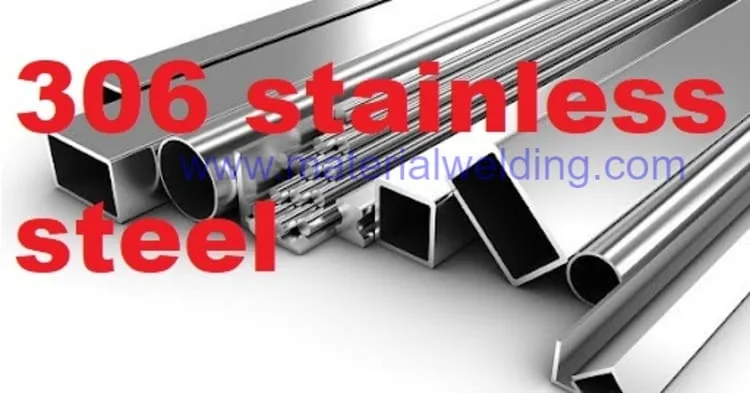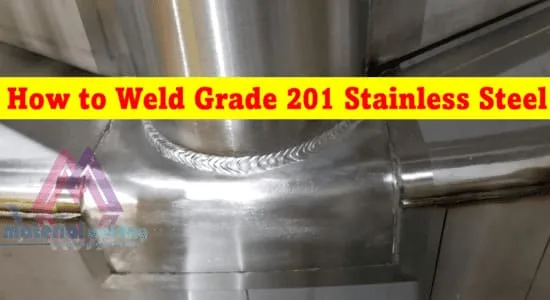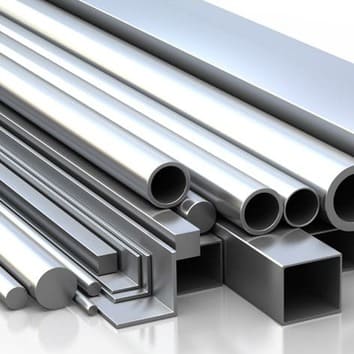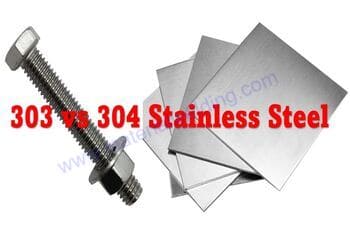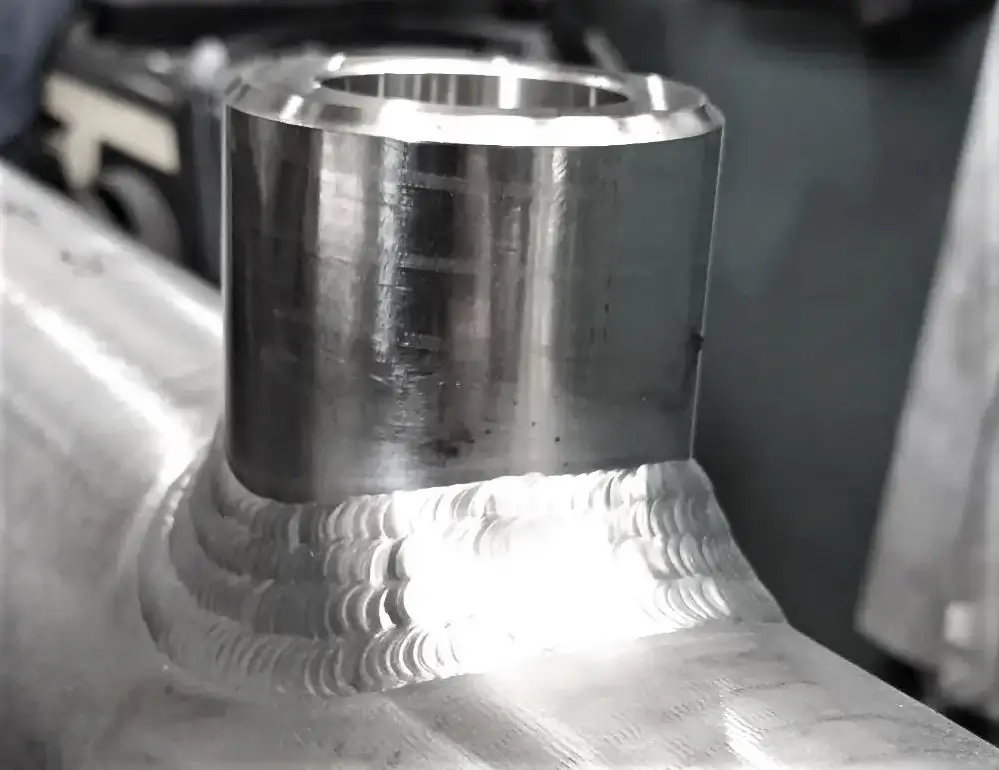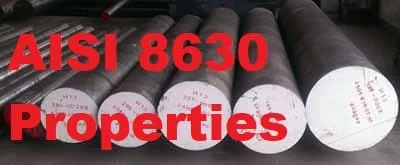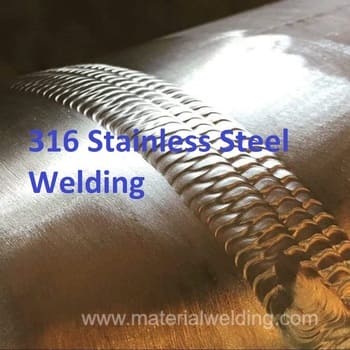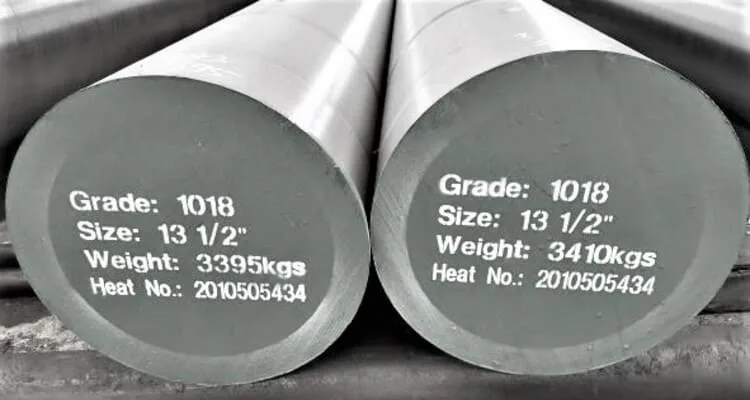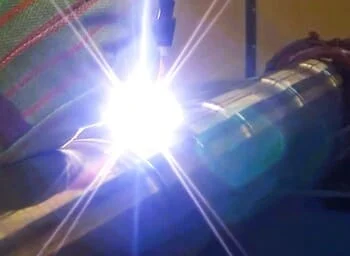AISI 304 Stainless Steel (18-8 stainless steel)
304 stainless steel is a versatile Austenitic Stainless Steel (Chrome-Nickel base, also called 18/8 Steel) alloy that offers a number of key features and benefits. 304 is non-magnetic and has excellent corrosion resistance, making it ideal for use in a wide range of applications.
It can be used in both indoor and outdoor environments, and is perfect for many different industries. It can be easily machined and fabricated. It’s also relatively easy to clean and maintain, making it a good choice for foodservice and healthcare settings
AISI 304 (18-8 stainless steel) Material Specification
The UNS Number of AISI 304 (18-8 stainless steel) is UNS S30400. Similarly, the UNS Number of AISI 304L is S30403.
AISI 304 Stainless Steel(18-8 stainless steel) is available in different forms, this material has different material specifications.
The most common form of AISI 304 is in sheet form, but it is also available as pipe, tube, bar, rod, and wire. The most important material specifications for AISI 304 Stainless Steel are listed in the below table:
| Material Specification | Type of material form |
| ASTM A240 | Plate, sheet, strips |
| ASTM A 182 | Flange, Fittings, Valves |
| ASTM A 213 | Seamless Tubes |
| ASTM A 249 | Welded Tubes |
| ASTM A 276 | Bars & Shapes |
| ASTM A 312, A409 | Welded Pipes |
| ASTM A 358 | EFW Pipes |
| ASTM A 376 | Seamless Pipes |
| ASTM A 403 | Wrought Fittings |
| EN 10088-2 | X5CrNi18-10, (EN 1.4301) |
AISI 304 Stainless Steel (18-8 stainless steel) Pipe Specifications
The pipe can be manufactured in a variety of diameters and wall thicknesses to meet specific requirements. There are several specifications that must be met when ordering 304 stainless steel (18-8 stainless steel) pipe.
The most important specification is the chemical composition, which must meet the requirements of ASTM A213 & A312.
The pipe must also conform to ASTM A312 for mechanical properties and dimensions, ASTM A790 for surface finish, and ASME B16.9 for fittings.
| Material Specification | Type of material form |
| ASTM A 213 | Seamless Tubes |
| ASTM A 249 | Welded Tubes |
| ASTM A 312, A409 | Welded Pipes |
| ASTM A 358 | EFW Pipes |
| ASTM A 376 | Seamless Pipes |
| EN 10088-2 | X5CrNi18-10, (EN 1.4301) |
304 (18-8 stainless steel) Stainless Steel Density
304 stainless steel (18-8 stainless steel) density is 7.9 g/cm3. This makes it a relatively dense metal, which can be both a good and a bad thing.
On the one hand, it means that 304 stainless steel is strong and can withstand a lot of wear and tear.
on the other hand, it means that it is not very lightweight, which can make transportation and installation more difficult.
Chemical Composition of AISI 304 Stainless steel (18/8 Stainless Steel)
304 stainless steel is a common type of stainless steel that contains about 18% chromium and 8% nickel and hence called 18-8 stainless steel.
It also contains small amounts of Nitrogen. This type of steel is known for its good corrosion resistance and high strength.
It can be used in a variety of applications, including food processing, chemical processing, and automotive manufacturing.
The chemical composition of Stainless Steel 304 and Stainless Steel 304L (18-8 stainless steel) Grades are given in the below Table:
| Grade | 304 | 304L |
| Element | Weight % | Weight % |
| Carbon | 0.07 | 0.030 |
| Manganese | 2.00 | 2.00 |
| Silicon | 0.75 | 0.75 |
| Chromium | 17.5 -19.5 | 17.5 -19.5 |
| Nickel | 8- 10.5 | 8- 12 |
| Molybdenum | 0 | 0 |
| Nitrogen | 0.10 | 0.10 |
| Sulfur | 0.30 | 0.30 |
| Phosphorus | 0.045 | 0.045 |
The addition of these materials helps to improve the overall strength and resistance to corrosion of the stainless steel. Other materials may also be added to 304 stainless steel in order to improve its properties, such as manganese & Nitrogen.
Mechanical Properties of AISI 304 Stainless Steel (18-8 stainless steel)
304 stainless steel (18-8 stainless steel) is a versatile, general-purpose stainless steel with good resistance to corrosion and oxidation.
It has a wide range of applications in both the industrial and consumer markets. 304 is one of the most popular grades of stainless steel, due to its combination of strength, formability, and corrosion resistance.
The Important mechanical properties (Yield strength, Tensile Strength, elongation & hardness) of AISI 304& AISI 304L according to the ASTM A240 are given in the below table:
| Grade | AISI 304 | AISI 304L |
| Yield Strength, Minimum | 30 Ksi (205 MPa) | 25 Ksi (170 MPa) |
| Tensile Strength, Minimum | 75 Ksi (515 MPa) | 70 Ksi (485 MPa) |
| Elongation, min% | 40 | 40 |
| Hardness, Maximum | 92HRBW/ 201 HBW | 92HRBW/ 201 HBW |
| Thermal Conductivity | 21.5 W/m·K @ 500 °C/ 932 °F | 21.5 W/m·K @ 500 °C/ 932 °F |
| Thermal Expansion | 17.3 µm/m/°C | 17.3 µm/m/°C |
| Density | 7.9 g/cm3 | 7.9 g/cm3 |
| Modulus of Elasticity | 193 GPa | 193 GPa |
| Melting Temperature | 2550 to 2651 °F (1400 to 1455 °C) | 2550 to 2651 °F (1400 to 1455 °C) |
Hardness of 304 Stainless Steel (18-8 stainless steel)
304 stainless steel (18-8 stainless steel) is a popular choice for many applications because it is corrosion resistant and has a good balance of strength and toughness. However, 304 stainless steel can not be hardened by heat treatment.
The maximum hardness permitted as per ASTM A240 is 92 HRBW (Rockwell) or 201 HBW (Brinell). The hardness of 304 stainless steel can be increased cold working only.
304 Stainless Steel (18-8 stainless steel) Magnetic
304 stainless steel (18-8 stainless steel) is Non-Magnetic. It is not attracted to magnets and will not be held by them.
This quality makes 304 stainless steel a good choice for use in applications where magnets might be present, such as in the proximity of loudspeakers.
This property can be useful when fabricating products that need to be non-magnetic, such as medical equipment or parts for motors. While other types of stainless steel may become slightly magnetic in the presence of a magnet, 304 will not.
304 stainless steel (18-8 stainless steel) shear strength
304 stainless steel shear strength is a measure of the metal’s ability to withstand forces that would cause it to break or tear.
The shear strength of 304 stainless steel is about 690 MPa, which is quite high. This means that the metal can withstand a lot of stress before breaking. This makes it a good choice for applications that require high strength and durability.
AISI 304 Stainless Steel (18-8 stainless steel) vs 430 Stainless Steel
In AISI 304 stainless steel vs 430 (UNS Number- S43000), AISI 304 stainless steel is the better choice.
It is more durable and will not corrode as easily as 430 stainless steels. 304 stainless steel is also a better option if you are looking for a material that will not rust.
AISI 304 stainless steel is a type of austenitic stainless steel. Austenitic steels are non-magnetic and have high corrosion resistance. The most common type of austenitic stainless steel is 304. 430 is a type of ferritic stainless steel.
Ferritic stainless steels are magnetic and have lower corrosion resistance than austenitic stainless steels. The primary difference between 304 and 430 is that 304 is non-magnetic while 430 is magnetic.
304 has a higher chromium and nickel content than 430, making it more resistant to corrosion. 430 has a higher carbon content which makes it harder and less ductile than 304.
304 Stainless Steel (18-8 stainless steel) Heat Treatment
304 stainless steel is a versatile alloy that cannot be heat treated due to its predominant Austenite microstructure.
One common method for heat treating 304 stainless steel is solution annealing, which involves heating the metal to a high temperature 1850° and 2050°F (1010-1120°C) and then rapid cooling it down.
This process alters the alloy’s crystalline structure & removes any chromium carbide that forms during welding or heating. Thus restore the original microstructure of AISI 304 stainless steel.
How to Identify AISI 304 Stainless Steel (18-8 stainless steel)?
304 stainless steel is a type of steel that is known for its corrosion resistance and strength. It is often used in food preparation and medical applications because it does not corrode or rust.
There are several ways to identify 304 stainless steel, including its appearance, composition, and mechanical properties.
To identify 304 stainless steel (18-8 stainless steel), you can use a magnet. If the metal is magnetic, it is not made of 304 stainless steel. You can also test the metal for its composition with a X-ray fluorescence (XRF) analyzer.
One way to identify 304 stainless steel (18-8 stainless steel) is by its appearance. It has a bright, shiny finish and is slightly darker than other types of stainless steel. It also has a slightly different texture than other steels.
Another way to identify 304 stainless steel is by its composition. It contains 18% chromium and 8% nickel, which gives it its corrosion resistance. It also contains small amounts of manganese and silicon for strength.
The final way to identify 304 stainless steel is by its mechanical properties.
304 stainless Steel (18-8 stainless steel) Machinability
304 stainless steel (18-8 stainless steel) is a chromium-nickel alloy with good machinability. It can be machined using most of the conventional methods, such as milling, turning, drilling, and grinding.
The alloy has a machining limit of 42 Rc, which can be increased to 48 Rc by using a cutting fluid. The use of carbide tools is recommended for better results.
In 304 stainless steel, the machinability is good. The chips are usually very fine and do not cause any problems. The cutting speeds are also high, and the tool life is good. However, some lubricants are needed to achieve the best results.
Heat concentrating at the cutting edges of austenitic alloys due to low thermal conductivity. This calls for the use of large amounts of coolants and lubricants.
AISI 304 (18-8 stainless steel) stainless steel vs 316L
304 stainless steel (18-8 stainless steel) and 316L stainless steel are two of the most commonly used types of stainless steel. They have many similarities, but there are also some key differences between them.
304 stainless steel is less expensive and has a lower resistance to corrosion than 316L stainless steel.
However, 316L stainless steel is more resistant to corrosion due to added Molybdenum & higher strength than 304 stainless steel. So, which type of stainless steel should you choose for your project?
The answer depends on your needs and budget. If you need a material that is resistant to corrosion, then 316 stainless steel is a good choice. If you need stainless steel for general purpose applications, then 304L stainless steel is a better choice.
304 stainless steel and 316L stainless steel are two of the most common types of stainless steel. They are both made from iron, but they have different levels of chromium and nickel. This makes them resistant to different types of corrosion.
304 stainless steel (18-8 stainless steel) is resistant to corrosion caused by chloride ions, while 316L stainless steel is resistant to corrosion caused by both chloride ions, pitting and sulfuric acid.
This is why 304 stainless steel is often used for food preparation equipment, while 316L stainless steel is often used for medical equipment.
316L stainless steel is a modification of 316 stainless steel with lower carbon content to minimize the risk of intergranular corrosion after welding.
It also has increased molybdenum content for better pitting resistance. 316L stainless steel has better overall corrosion resistance than 304 stainless steel and is used in more demanding applications.
Is 304 Stainless Steel magnetic?
304 stainless steel (18-8 stainless steel) is a non-magnetic material. This means that it will not be affected by a magnetic field and will not produce a magnetic field.
304 stainless steel is made up of a mix of iron, chromium, and nickel. These elements make 304 grades predominately austenite microstructure and create a non-magnetic alloy.
304 stainless steel is non-magnetic because it has low levels of carbon. Carbon atoms can disrupt the alignment of the iron atoms in the steel, leading to the development of magnetic domains. The low levels of carbon in 304 stainless steel mean that it is not magnetic.
304 stainless steel (18-8 stainless steel) is non-magnetic because it is made up of a blend of nickel and chromium.
The addition of these two metals makes the steel resistant to rust and corrosion, but also eliminates its magnetic properties.
AISI 304 Stainless Steel Compatibility Chart
304 stainless steel is a common type of steel that is compatible with many other types of steel. There are, however, a few incompatible types of steel.
The following chart is designed to help you determine if two types of steels can be safely combined. It is often chosen for its compatibility with other materials. This chart can help you determine the compatibility of 304 stainless steel with other materials.
Incompatible Types of Steel:
-Carbon Steel and 304 Stainless Steel (18-8 stainless steel): Carbon steel will corrode when in contact with 304 stainless steel.
-304 Stainless Steel (18-8 stainless steel) and 316 Stainless Steel: 316 stainless steel has a higher level of chromium than 304 stainless steel, making it more resistant to corrosion. When combined, the two steels will have different levels of corrosion resistance.
For a detailed 304 Stainless Steel (18-8 stainless steel) Corrosion Compatibility Chart, Click here.
304 Stainless Steel Melting Point
304 stainless steel (18-8 stainless steel) is a common type of stainless steel that has a melting point of 2550 to 2651 °F (1400 to 1455 °C).
This means that it can be melted down and used to create new objects or products. This also help to recycle the steel to reduce carbon foot print and sustainability.
Does 304 Stainless Steel (18-8 stainless steel) Rust?
304 stainless steel (18-8 stainless steel) is a common type of stainless steel that contains approximately 18% chromium and 8% nickel.
304 stainless steel is the most popular form of stainless steel because it is relatively inexpensive and has good corrosion resistance.
One common question about 304 stainless steel is whether or not it rusts. The answer to this question depends on how the 304 stainless steel is used.
If the 304 stainless steel (18-8 stainless steel) is exposed to oxygen and moisture, a thin layer of rust will form on the surface of the metal. This layer of rust is called a passive layer because it protects the underlying metal from further corrosion.
The chromium oxide layer that forms on the surface of 304 stainless steel (18-8 stainless steel) is very thin but very tough, which makes it resistant to rusting.
If this chromium oxide layer is damaged or worn away & there is insufficient time for passive layer formation due to any service condition, the steel will quickly corrode.
AISI 304 Stainless Steel Low-Temperature Limit
AISI 304 stainless steel (18-8 stainless steel) is a versatile material also known as Cryogenic Stainless Steel that has a low temperature limit of 320°F (-195.5°C).
This means that 304 can be used in a wide range of applications where low temperatures are required. Some common applications include cryogenic storage tanks, refrigeration coils, and food processing equipment.
